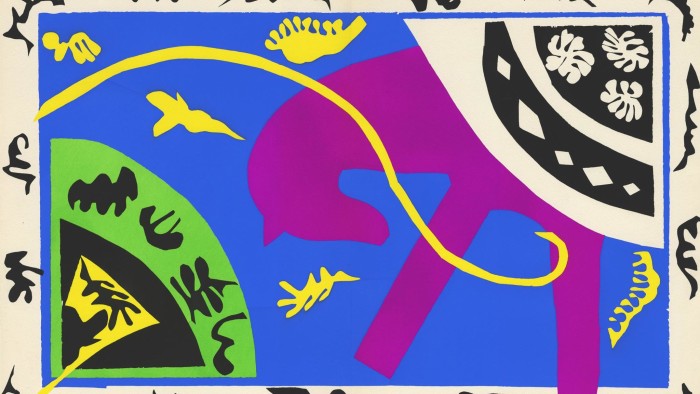‘Henri Matisse: the Cut-Outs’ and Malevich, Tate Modern, London

Simply sign up to the Life & Arts myFT Digest -- delivered directly to your inbox.
Tate Modern never looked more authoritative, or offered richer insights into the history of modern art, than it does with this summer’s landmark surveys of late Matisse and Russian avant-garde leader Kazimir Malevich. Each show must be savoured separately, but they also take fire from one other, and in the next weeks, before Matisse moves to MoMA, here is a unique chance to see two modernist giants in parallel.
Matisse, aged 70, began his cutouts during the second world war when, recovering from an operation, he was frail in body but rejuvenated in spirit and invented the medium of cutting into sheets of coloured gouache. Violent or doomed circus figures among his first cutout series, “Jazz”, reflect the wartime ambience: “Knife Thrower”, “Sword Swallower”, “Icarus” falling from a sky whose yellow stars imitate exploding shells; the couple clinging together in the face of fate in “Destiny”. From here Matisse proceeded to greater monumentality, composing algae-like and organic forms into vast tableaux – “Oceania”, the sevenmetre “The Parakeet and the Mermaid” – before transferring cutouts to stained glass window designs for the Rosary Chapel, Vence.
Malevich created “Black Square” on the eve of the Russian Revolution, developed architectural models from his suprematist geometric language, then returned to painting to fuse abstraction and figuration in depictions of faceless peasants and sportsmen composed in strict vertical colour areas. Motionless as saints in Russian icons, these emblems of suffering and redemption were painted during the horrors of famine, when the dying Malevich was out of political favour.
The big shared themes here are abstraction; pushing painting to formal limits in times of personal and political crisis; extending the medium to spectacle, decoration, architecture; and balancing sensuality with simplification, austerity and spirituality. Evoking ethereal effects – what Matisse called “cosmic space” and Malevich described as “a white free endlessness – infinity” – both artists make paint transcendent and timeless, even as each is grounded, as these scholarly, comprehensive shows demonstrate, in his own time and place.
tate.org.uk, 020 7887 8888, Matisse to September 7, Malevich to October 26
Photograph: Centre Pompidou
Comments